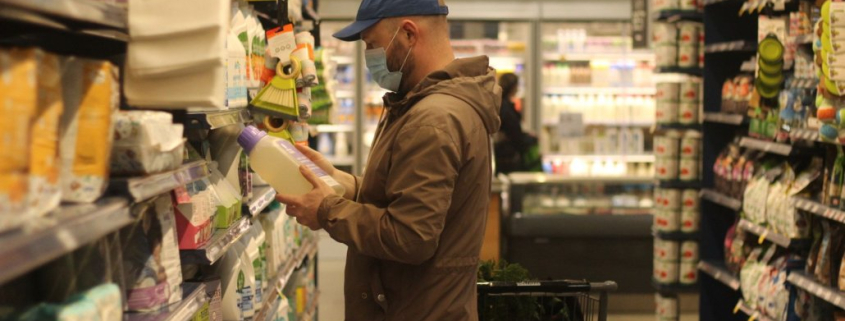
Decoding Eco-labels on Cleaning Products
In response to growing awareness of environmental impacts, companies are adorning their products with claims and labels to target concerned consumers. With so many claims and so called ‘eco-labels’ out there, it can be hard to decipher what is ‘greenwashing’ and what is truly a safe product for the environment.

Greenwashing – false, vague, weak or exaggerated environmental claims designed to entice eco-conscious consumers.
Although making false claims about a product is illegal under the Consumer Packaging and Labelling Act and the Competition Act in Canada, it is still important to be critical of vague and unsubstantiated claims. For example, you may find a cleaning product claiming to be ‘Biodegradable’ – this alone does not actually tell you much. Everything will eventually biodegrade. What we want to know is if something that will degrade rapidly into environmentally safe by-products. The OECD (Organization for Economic Co-operation and Development) has established standards for biodegradability, a reference to these standards provides assurance that the product is biodegradable in a meaningful way.
Labels and Claims:
The sheer number of labels and certifications that you may come across when searching for products can feel overwhelming. To help, here is a list of common labels and claims and what they mean.

Biobased or Plant Based
Products made from renewable, biological ingredients (e.g. plants) rather than being made from petroleum products. Suggests product is more likely to be sustainable, but does not necessarily assure safety in the environment. The USDA offers credible certification that a product meet biobased standards, but it does not assess the environmental safety of a product like EPA Safer Choice does.

Biodegradable
Product will naturally break down, but does indicate how readily it will break down, nor does mean it necessarily means it breaks down into safe components. Look for OECD standards for biodegradability being met.

Certified B Corporation
Certification for businesses based on high social and environmental standards. This label applies to the company creating the product and is not specific to an individual product.

| ECOLOGO Product has been assessed independently to meet environmental standards for the product’s life-cycle. Only the top 20% of products available can achieve certification. |

EPA Safer Choice
Ingredients independently assessed by US EPA scientists to meet strict environmental and health standards, while also performing on par with traditional cleaning products.

Leaping Bunny
| Certifies that a product has not been tested on animals, does not relate to product safety in the environment. |

Natural Ingredients
Implies a product is made up of naturally derived biological or mineral ingredients. This does not necessarily mean that a product is safe for you or the environment. For example, Borax (sodium borate) is presented as a natural cleaning product, while Borax is a naturally occurring mineral, it is toxic and endocrine disrupting.

Organic
Certified organic products have been made of at least 95% organic ingredients and contain no genetically modified organisms. If a product is organic, it would imply it is formulated from biological ingredients and those were grown without synthetic fertilizers or pesticides.

Recycling Symbol (Mobius Loop)
Indicates a product or packaging can be recycled or is made up of recycled material. Caution as some plastics (indicated by the number inside the loop) are not readily recyclable. Numbers 1, 2 and 5 are recyclable while numbers 3, 4, 6 and 7 are not so easily recyclable. For more information, see this post by Regional Recycling BC.
Tips:
- Be cautious of vague or generic terms like ‘eco-safe’, ‘green’, ‘natural’ or ‘environmentally friendly’.
- Look for products that back up their claims and are independently certified by trustworthy organizations such as U.S. EPA ‘Safer Choice’ and the ECOLOGO certification.
- Simplify the number of products you use to those that you actually need and ensure those are safe. You don’t need a specialized cleaning product for every single task.
- Many cleaning tasks can be done using food safe ingredients like vinegar and baking soda, see recipes to create your own cleaning products.
Handy resources for finding safer products for yourself and the environment:
- Both the EPA Safer Choice and ECOLOGO have online search databases products that meet their high standards.
- The Environmental Working Group’s (EWG), a non-government organization that independently evaluates products to help consumers choose more environmentally friendly products, has a Healthy Cleaning Guide and a product search tool for cleaning products that are rated on their safety.
To learn more about the labels you may encounter:
- Ecolabel Index provides a list of eco-labels that may be encountered in North America.
- The Government of Canada has a list of environmental labels and claims.
It is also important to remember that everything we buy has some environmental impact and one of the best things to do is to consume less overall, reduce your waste, and participate in the circular economy.
Photo credit: Maria Catanzaro
